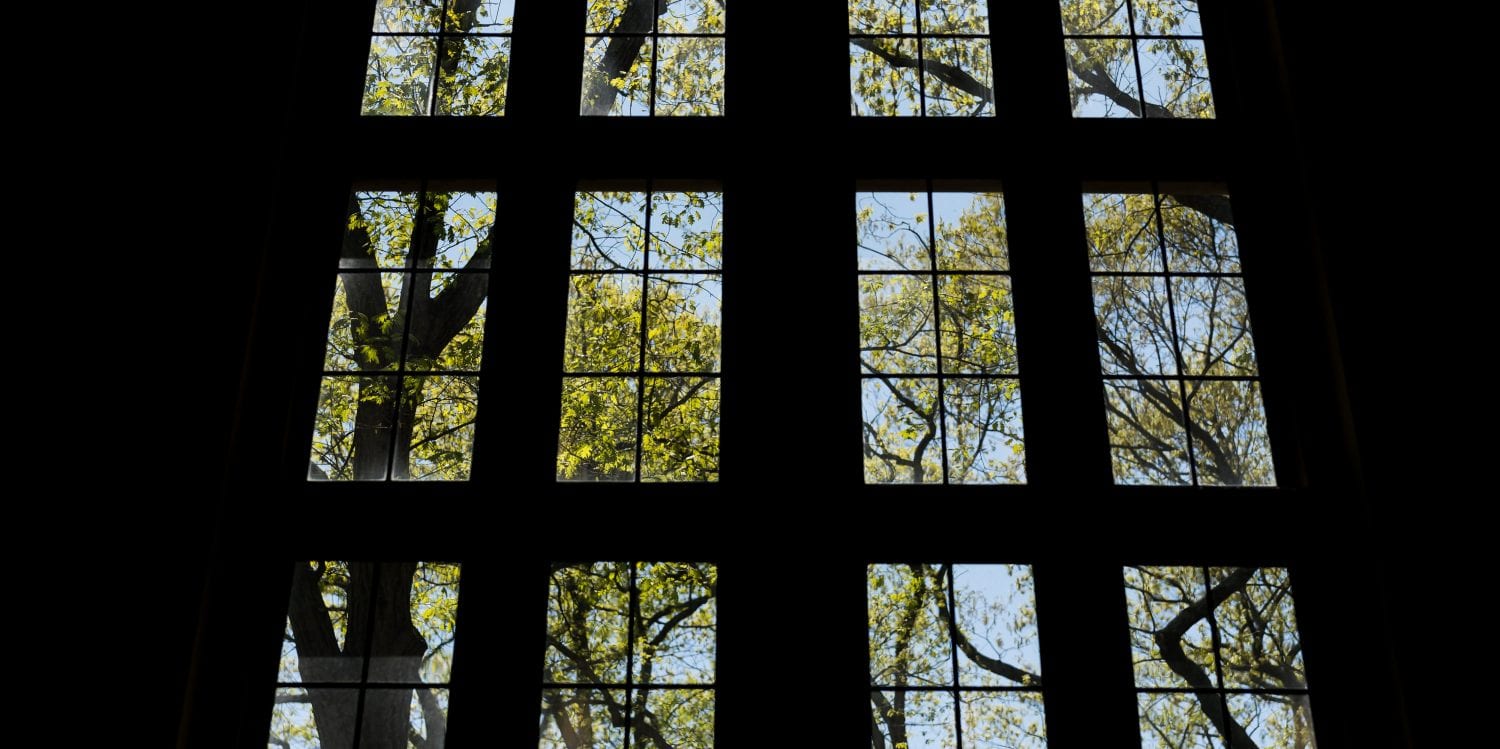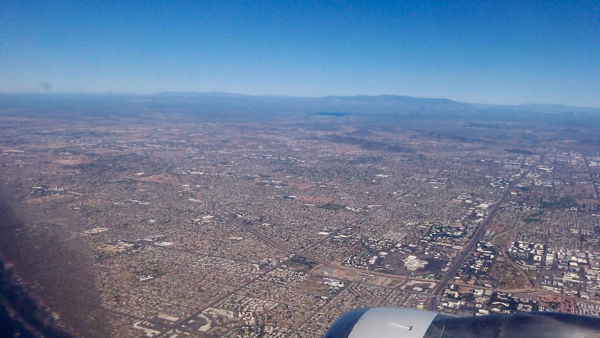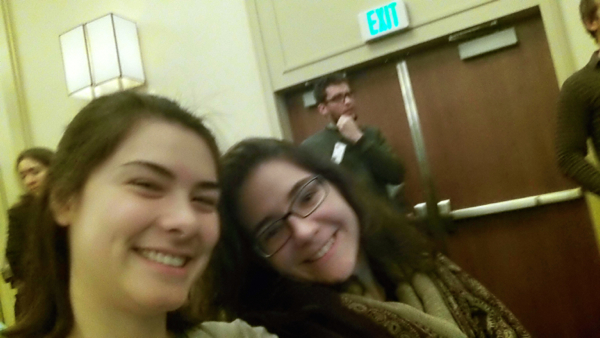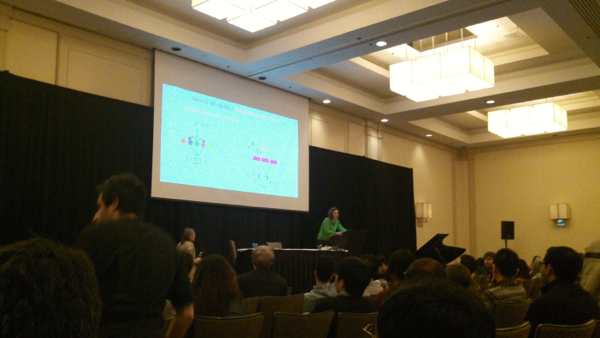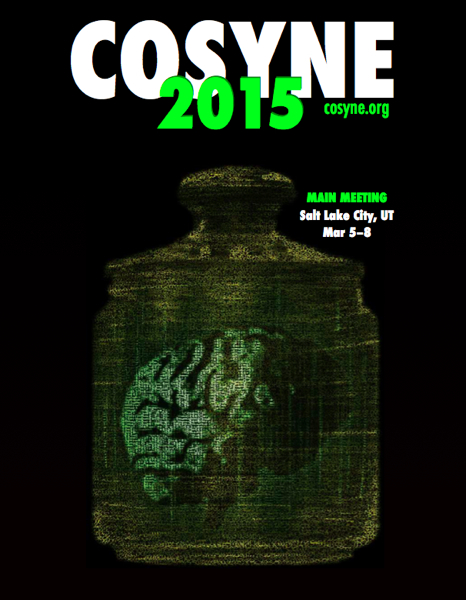Hey all :).
Hope you’re doing well! I’m writing to you from Utah, where I am attending CoSyNe, a 6-day conference on computational systems neuroscience. It is intense, but I came in expecting most of the information to go over my head. I’m actually surprised by how much I’m able to understand—my education up to this point is serving me well :).
I have so many thoughts on this conference, but I apologize in advance for their disjointedness. I feel much of life is reflection, but sometimes you have to live so that that reflection can continue to be productive. I’ve been enjoying the “living” stage for the past six days, as this is the final day before I head back to Wellesley/MIT.
First, here’s some description of the conference’s structure. CoSyNe is divided up into two parts—the main conference in Salt Lake City, and the workshops at Snowbird, which is a ski resort. During the main conference, there is one big lecture hall where 45-min and 15-min talks are held throughout the day. During the workshops, there are several concurrent talks describing specific topics. About 600 people attend this conference, with higher attendance at the main meeting.
The scientists attending this conference are computational people studying systems-level neuroscience. Neuroscience is the study of the brain. There are several levels at which the brain can be studied: for example, cognitive neuroscience treats the brain as a black box, and is focused on what can be learned from behavior. On the other end of the scale is molecular neuroscience, studying the interaction of molecules in neurons. The techniques and background needed at each level are different, which is why neuroscience is acknowledged to be such an interdisciplinary field. This conference is focused on system-level neuroscience, which is centered on understanding the function of neural circuits and systems. Topics include decision making, memory, sensory motor circuits, neural representations during target search, and many more. Further, this conference is focused on computational systems-level neuroscience, which is trying to understand the computations that drive each of these circuits. Interestingly, because this conference is so computation-heavy, there is a large number of people who have backgrounds in physics, engineering, or computer science rather than neuroscience. There are also theoretical neuroscientists who don’t conduct experiments but instead model data that is already present in the field. What all of this means in practice is that we have a wide variety of talks with high scientific quality, since the scientists here are using very informative techniques in animals alongside computational models that they develop to analyze their data and inform future experiments.
This has been an amazing conference for me. It is amazing not just because of the scientific material, since try as I might, as an undergraduate with a major in neuroscience (not computer science, for example) I am unable to grasp much of the content. However, I do understand more every time I go to a conference, and I give particular thanks to my Intro to Machine Learning class this semester, which has helped me attempt to grasp the prolific computational models that have been presented. I am also informed that if anyone understands everything they’re not doing the conference right :).
But what I have loved most about this conference is the environment. It is a similarly eye-opening experience to when I lived at MIT last summer, when I was surrounded by a group of 40 undergraduates passionate about scientific questions. I had never experienced a group of peers who so consistently steered conversations towards science. This conference brings that inclination to a whole new level.
The people who attend CoSyNe are mostly post-docs, PIs, and graduate students. (…I had no idea when I started this post that I would need to include so many explanations! It’s funny what we learn to take for granted.) P.I. stands for principal investigator, and these are the people who run the lab. They are almost always professors, but if they are not in academia then they can also be known as “group leaders” or by other titles. PIs generally have post-docs and graduate students who do the actual data collection , while PIs develop the experiments, write grants to bring money into the lab, write the scientific papers, help analyze the data, etc. Post-docs are scientists who have their PhDs and are working full-time on research under PIs for a few (or more) years—they then hopefully transition to PIs. Graduate students are in the process of getting their PhDs.
There were probably about ten undergraduates at the conference (in a conference of 600). CoSyNe is an expensive conference to attend, so almost all of us undergraduates had won an NSF/Brain Corp grant to be able to come. This was the first year these undergraduates grants had been offered, and I am incredible grateful for the opportunity to attend CoSyNe. The people who designed the program also assigned us a graduate student / post-doc mentor. Mine was Dr. Athena Akrami, in the Brody lab, who was wonderful in showing me around, and even invited me to her lab dinner. In fact, I was amazed at how friendly everyone was at the conference. As an undergraduate, you spend a lot of time listening to conversations whenever you are lucky enough to be invited to sit down. And there is just so much content in those conversations– this is what I mean by environment, the opportunity to listen, like an apprentice, to the kind of life that these scientists, these thinkers, lead.
They talk about science. They talk about the talks they just listened to, what they could do to extend the experiments, what evidence was weak, what techniques they might have used. They talk about the coolest findings, the great things that are being developed, and the recent papers that were published. They talk about teaching and traveling, and collaborations. They talk about big names in the field, contradictory findings, who moved from who’s lab to where and why. They talk about science and they talk about people, which I’m learning are the two essences of research. Because good science doesn’t come from nowhere—it comes from the same people over and over again, the really good scientists who churn out finding after finding.
And it’s interesting, who those important people are. Because they are, by vast majority, white men. I spent all too much time thinking about this, which I blame on an incomplete understanding of the lectures. When you’re confused about what’s going on, your mind wanders, so you start to notice the fact that there’s about a 1:8 ratio of women to men here (and though I haven’t done ratios of the diversity, they are similarly imbalanced.) However, I can’t entirely blame my lack of scientific understanding—I was talking to several female graduate students at MIT, and they agree that they too experience this annoying phenomenon of paying attention to ratios. It’s so aggravating because it is a distraction.
Wellesley fosters an increased sensitivity to differences. It has made me more aware of and open-minded to issues of gender fluidity, racial diversity, sexual diversity, disabilities, and many other topics arising from marginalized groups. The flip side of this is that I am more aware of these issues. Which means I think about them when I should be attending to something else. I have no conclusions about this topic. I suspect it will be something I will mull over for the rest of my life, especially if I end up in this field.
As a last comment on this topic of gender imbalance, I wanted to mention that CoSyNe happily had a “Women at CoSyNe” luncheon. This is where I met the MIT graduate students, and also spoke with a post-doc who had an aggressive stance on how women were forced to hold their own (improving gender relations in science is always a discussion with many opinions). I also met Dr. Anne Churchland, a professor at Cold Spring Harbor studying decision-making, who I hero-worship and am not alone in admiring :). A former Wellesley graduate, she writes anneslist, a list of prominent female neuroscientists, and was in fact the person who encouraged me and another Wellesley student to apply to come to CoSyNe. And though I have not seen any discrimination here, during her scientific talk today, she was the only PI to correct for subtly male-oriented language.
So apart from the science, this conference has been intriguing in relation to gender, race, power dynamics, class differences, and the international community (one thing I love about science is that it’s the most internationally diverse community I’ve encountered. There are so many languages spoken). But aside from these observations, I want to bring it back to how welcoming this community is, because that’s been my overwhelming experience. I don’t know too many faces or names here, as I’m very early on in my career path, but the people I know and have met have all made an effort to make me feel welcome. I waved at Dr. Rick Born, a professor at Harvard Medical School (HMS), when he was talking to a graduate student, and he broke off to discuss swimming with me as we had swum together two summers ago. Mark, one of the post-docs at HMS who I also see occasionally (and in fact only know by first name), also took the time to say hello this morning. After I ate dinner with the Brody lab, members of that lab asked me how it was going when we saw each other in the elevator. I saw Professor Matt Wilson, who is a professor at MIT and who has no idea who I am, in the elevator, and after introducing myself he discussed with me why this was one of his favorite conferences. Emily, my TA for my 9.40 Introduction to Neural Computation class last year, invited me over to talk with her fellow graduate students. I have sat down at tables and started discussions with anyone who was around. It is an incredibly welcoming community, and it just highlights to me that this field, of science and people, is complicated and complex but just as warm and fascinating.
Finally, I want to highlight what I think I’ll love about this conference in the future. Nowhere has the energy been higher than during the workshop discussions. All of the speakers who just presented take a seat at the front of the room with a microphone shared between them. They hardly need one, since the rooms are small, though packed with a hundred or so people. The facilitator, often one of the speakers themselves, will ask a question. What follows is a rapid-fire exchange of ideas, the microphone passed around the speakers for only a bit before one of them will reference someone else’s work, and that person will speak up from the audience to add their input. More questions from the audience, more back and forth from the podium speakers to the scientists in the audience seats, the lines not so much blurred as nonexistent as the thoughts bounce back and forth. Someone will mention a paper as evidence– everyone will know it. Someone will call someone out by first name, and they’ll speak from their chair. There’s incredible energy, and I only had this experience once, fittingly on the last day of the conference. I had sat through all of the morning lectures, quite on accident (I went since I knew Dr. Chuchland and Dr. Born were speaking, and the other two talks were so lively and accessible that I could keep up.) Then I accidentally sat through all of the afternoon sessions, and before I knew it I was mostly following the final argument of whether brain perturbations were informative if they didn’t rely on causal models. There was still a sense of exclusion, of an observer, because I don’t know these topics well, I don’t know these papers, and I don’t know these people. But it was a taste of what is to come, a sample of the energy of the whole room: the beauty of the discussion.
That has been my CoSyNe conference. It has been foremost an experience of being, of listening—of listening to talks, and knowing that someday I’ll be able to analyze them critically; of listening to science, and learning how to craft a beautiful experiment. Of listening to presenters, and absorbing how to structure a talk; of listening to questions, and learning about new techniques, information, and controls. Of listening to call-outs, and sensing the connections between people; of listening to whirling arguments, and making connections between ideas.
And finally of listening to people, loving the struggle to understand what’s happening on and off the screen. Attending CoSyNe as an undergraduate has been the extraordinary experience of being enveloped in this field’s thinking– novel, complicated, and fascinating.
Monica
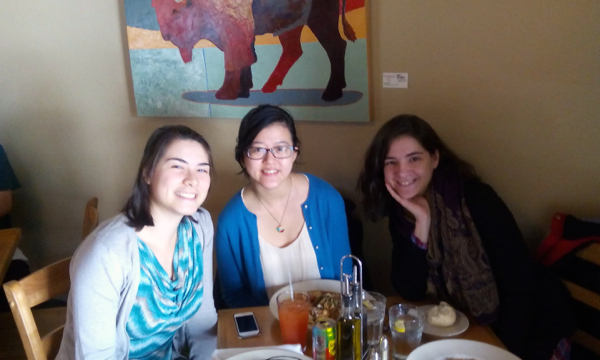
These are my roommates from the main conference! Me, Rachel, and Milena, all senior undergrads who received grants to attend Cosyne.

Some more of the undergraduates who also received grants to attend Cosyne! Here we are at the Escape Key, a brain-teaser attraction in Salt Lake City. Linhchi, Justin, Kayla, Eudorah, and me.
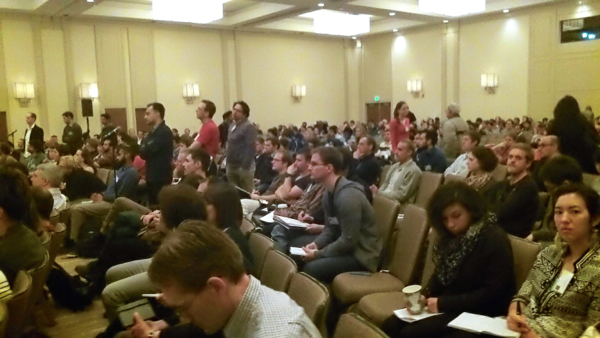
Just to give you a scale of the main conference lecture room, here are audience members cuing up to ask questions.
